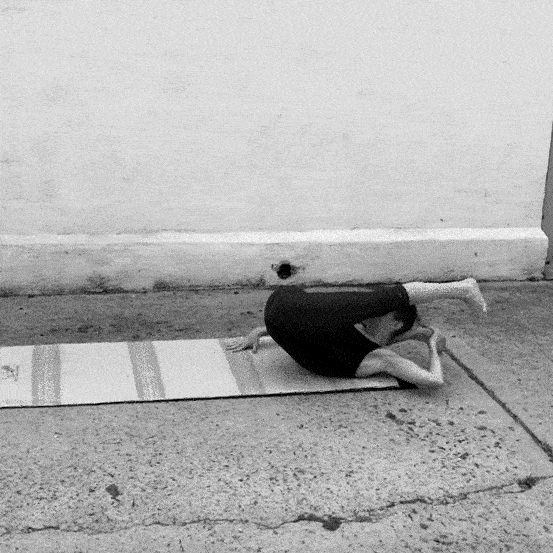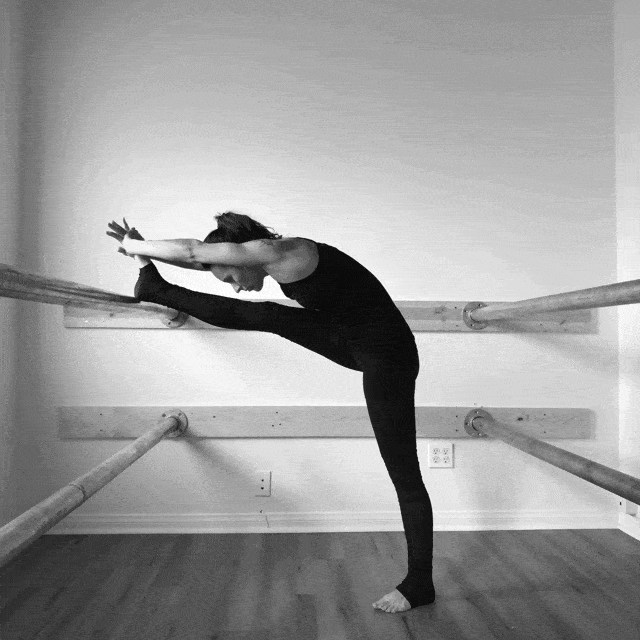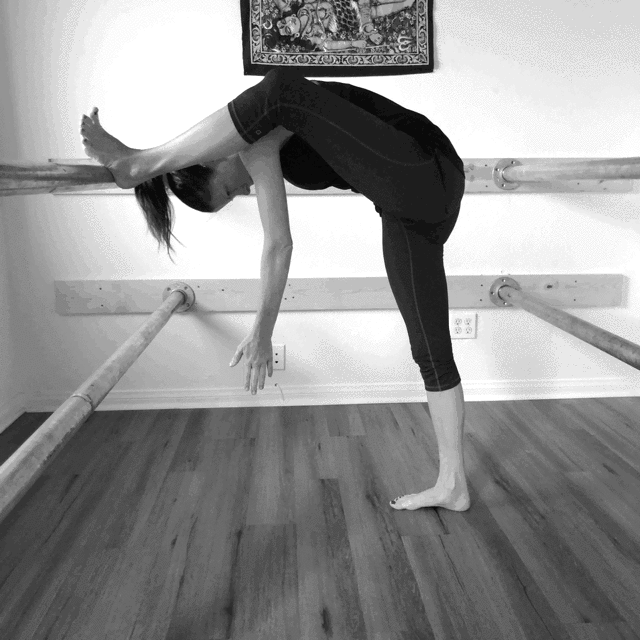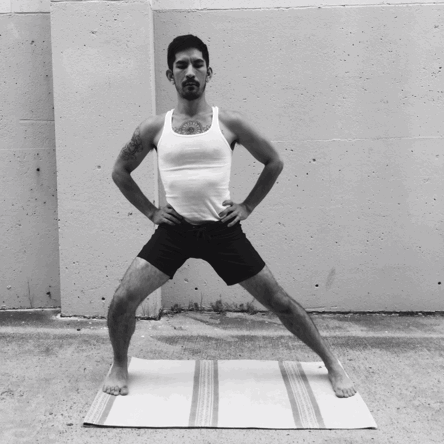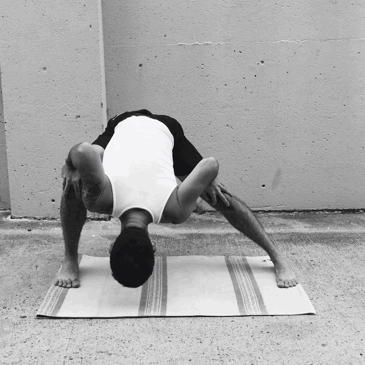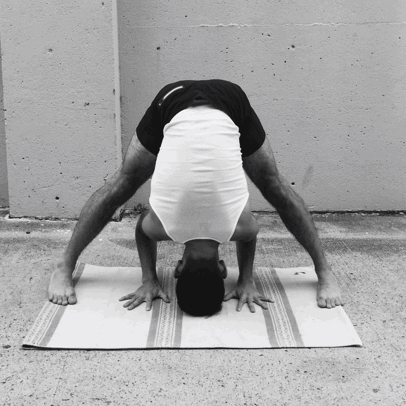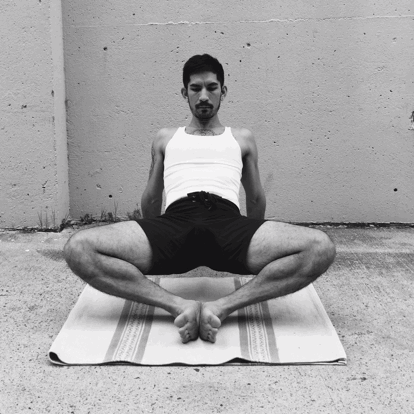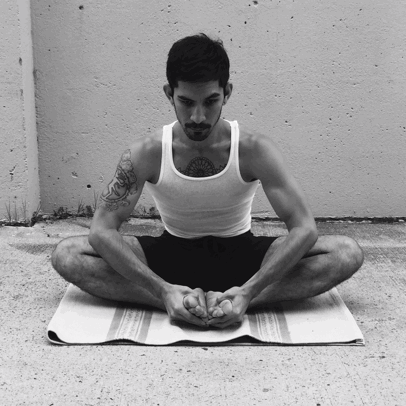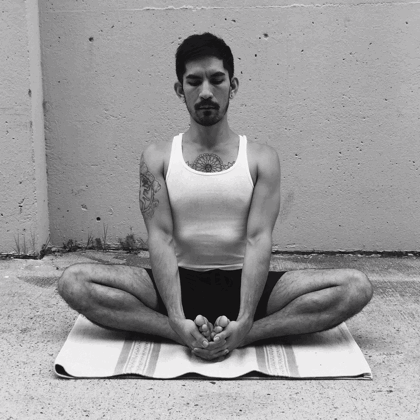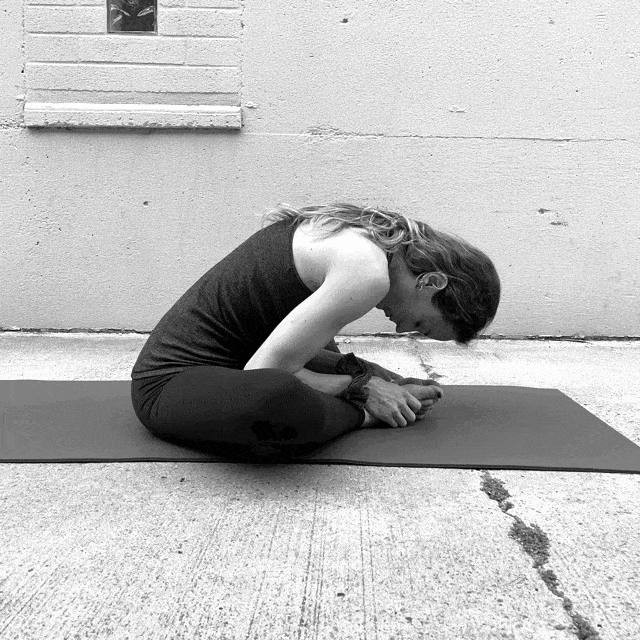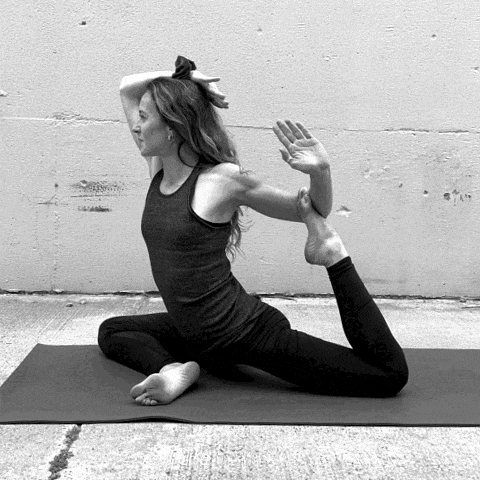LEG BEHIND THE HEAD
Leg behind the head, or “eka pada” is one of the most valuable yet misunderstood directions of opening in the body. It is a combination of the forward bend and lotus openings, and can be executed in seated, standing, or supine positions. Great preparation and conditioning of the body must occur before one can safely and effectively practice these kriyas.
Eka pada opening requires completely open hips and back. Performing eka pada exercises will further energize the legs, hips, back, and spine, including the neck. It is an excellent counter to deep back bends as it is the deepest expression of forward bending.
The Steps to Take:
The first three exercises are foundational kriyas used to develop standing postures. They condition the standing leg, hips, hamstrings and area of the lumbar spine. One should take great care in preparing the body for leg behind the head as it is a very sensitive opening. You will know the body needs more conditioning and preparation if you get frequent neck/back spasms after practicing leg behind the head.
1. Standing Leg Extension B
Foundational kriya used to develop splits and standing postures · Conditions the standing leg and area of lumbar spine · Opens backs of legs
Standing leg under hip, opposite leg extended forward onto bar, Neutral leg rotation, Neutral pelvic tilt 1. Exhale to flex at hip joint and forward direct upper body toward the top leg. 2. Inhale, return to starting position · Repeat 25-30 times · Follow with energization technique · 3–9 sets total
Energization technique: Enter forward stretch extending arms towards top foot · Open chest and gaze past toes · Practice 10–30 kapalabhati
Primary Movement/Direction of Opening: Forward flexion of the spine
Energetic Properties: Grounding, stabilizing
Other Important Information
Lift muscles in the standing leg with a contrasting feeling of grounding through the bones.
Keep shoulder blades together and down.
2. Standing Leg Extension D
Foundational kriya used to develop standing postures · Conditions the standing leg and hamstrings · Further develops the samakonasana opening
Setup
Base: Standing leg under hip, extended leg sideways on bar, Pelvis neutral Stem: Forward flexion, torso turned ~45 degrees Cap: Head slightly lifted to energize the neck Limbs: One hand stacked on other, reaching toward the floor Focal Point: Gaze slightly forward
Directions
Follow strong exhale movements to flex at hip joint and pump the upper body toward the floor.
Repeat 25–30 times
Primary Movement/Direction of Opening: Forward flexion of the spine, leg behind the shoulder
Energetic Properties: Grounding, stabilizing
Other Important Information
Lift all muscles in the standing leg with a contrasting feeling of grounding through the bones.
Keep heels moving away from the pelvis.
3. Standing Leg Extension E
Foundational kriya used to develop “leg behind the head” postures · Conditions the hips for advanced forward bending abilities
Hips level · Neck relaxed and head relaxed toward the floor · Follow strong exhale movements to flex at hip joint and guide the upper body toward the floor, shoulder and head under leg · Repeat 25–30 times · Follow with energization technique · 3 sets total
Energization technique: Enter “leg behind the head” position and practice 10-30 kapalabhati
Primary Movement/Direction of Opening: Forward flexion of the spine
Energetic Properties: Grounding, stabilizing, energizing
Other Important Information
Keep knee as close to shoulder as possible and keep ankles firm
4. Prasarita Padottanasana
A foundational kriya used to develop the forward bend and splits abilities
Feet ~3 ft apart · Warm up by lunging side to side in both high and low positions.
Rest top of head onto floor and energize the position with 10-30 kapalabhati.
Primary Movement/Direction of Opening: Forward flexion of the body
Energetic Properties: Grounding, stabilizing
Other Important Information
Balance the weight in the four corners of the feet and lift arches and leg muscles upward.
Maintain bandha activation to protect the back.
5. Baddha Konasana
A foundational kriya used to develop seated positions
Neutral pelvis with feet together, knees apart
1. Use the hands to open the soles of the feet upward and exhale, directing the chest and chin forward. 2. Inhale, return to starting position · Repeat 25–30x · Follow with appropriate energization technique · 3–9 sets total
Engage outer hips and round spine to touch forehead to toes · Practice 10–30 kapalabhati
Alternate Energization Technique: Keep spine extended, engage outer hips and bring chin to the floor · Practice 10–30 kapalabhati
Primary Movement of the Spine/Direction of Opening: Forward flexion of the spine, rolling forward-tilt of the pelvis
Energetic Properties: Grounding
Other Important Information / Pointers
Press outer edges of the feet together and pull knees away from hips to create more space for the forward movement.
Keep elbows in front of shins.
Do not be discouraged.
6. Pigeon/Eka Pada Rajakapotasana
Foundational kriya used to develop both seated and back bending postures
1. From starting position, follow exhale movements to roll the back hip toward the floor 10–15x. 2. Sit completely upright and energize with 10–30 kapalabhati · 3–9 sets total
Spine in extension, chest lifted
Eyes directed forward or upward
Primary Movement/Direction of Opening: Extension of the spine and legs, External Rotation of the hips
Other Important Information:
The external rotation of the hip must be developed separately before attempting advanced variations of this kriya.
Advanced variations work with bending back leg, going deeper into backbend.
7. Leg Behind the Head
Landmark ability of the forward bend dimension · Energizes the legs, hips, back and spine
Primary Movement/Direction of Opening
Extension of the spine and legs
External rotation of the hips
Forward flexion of spine
Energetic Properties: Energizing
Setup
Base: One leg bent in external rotation; other leg held in multiple positions in the direction towards back of head (See directions below) Stem: Spine in extension, chest lifted Cap: Head balanced over the hips Limbs: Hands and arms hold leg in multiple positions Focal Point: Eyes directed forward or upward
Directions
1. From starting position, wrap the right elbow around a flexed right ankle. Wrap left forearm around right forearm to secure foot. Follow exhale movements to rock leg side to side.
2. Change hand position to hold right foot with left hand. Right hand placed over left to secure flexed ankle in hand. Using the strength of the arms, follow exhale movements to press foot towards forehead 10-15x.
3. Place right knee on top of right shoulder. Grab top of right foot with left hand. Press right hand onto floor next to right hip using the tricep to encourage right leg back. Extend right leg and hold for 10 kapalabhati.
4. Place right foot behind the head for 10 kapalabhati.
Repeat on left side
3–9 sets total
Other Important Information:
The external rotation of the hip and forward bend dimension must be developed separately before attempting advanced variations of this kriya.
Advanced variations work with eka pada shoulder stand rolls and the dwi pada position.
Key Concepts · Lotus · Splits · Locust · Handstand

